With assembly polls round the corner, there is utmost urgency in managing the basic spadework to help flood-devastated Kashmir get back on recovery track. Drafting large policy framework and identification of resources might take time. Till then the government must follow seven sure-fire steps to push the re-start button, reports RS Gull
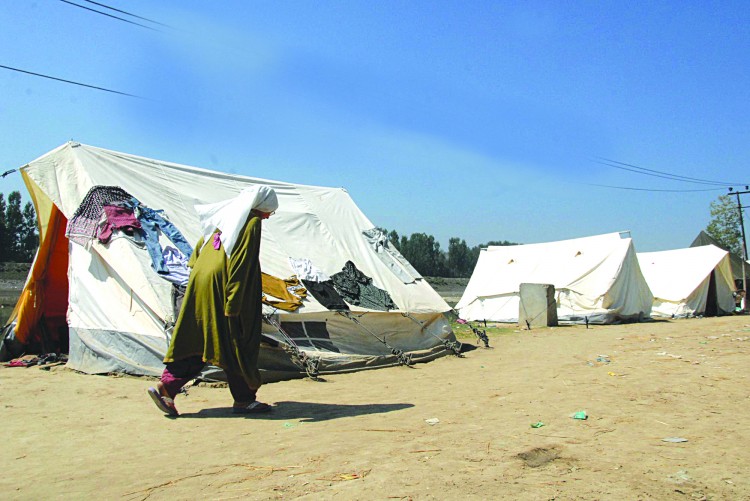
Floods have remained more of a routine but the urban floods to apparently modern Srinagar is something new that Kashmir is facing. Its debilitating impact on the overall economy is the worst aspect of the catastrophe.
Three fortnights since the Jhelum breached its dykes and entered Srinagar, Kashmir is still in a relief phase. Given the impact the prolonged inundation may have on the foundations of the structures (350 thousands affected), it may still require some more time to understand the quantum of loss, tentatively put at Rs 100,000 crore.
Srinagar continues to be dusty haunted city. It requires some effort to trace, if at all, people live in Rajbagh and Jawahar Nagar, especially during nights when home-lights make it otherwise obvious. Society is working overtime to bounce back to near-normalcy. But it is not so easy. Temperatures are already down and the winter is round the corner.
Lot of efforts at the level of society and governance structure are required to help the re-rise of a society that has valiantly fought to minimize human losses this past September and has a history of resilience and survival in harsh situations. Seven baby steps are immediately required to be taken.
IMPROVE LIQUIDITY
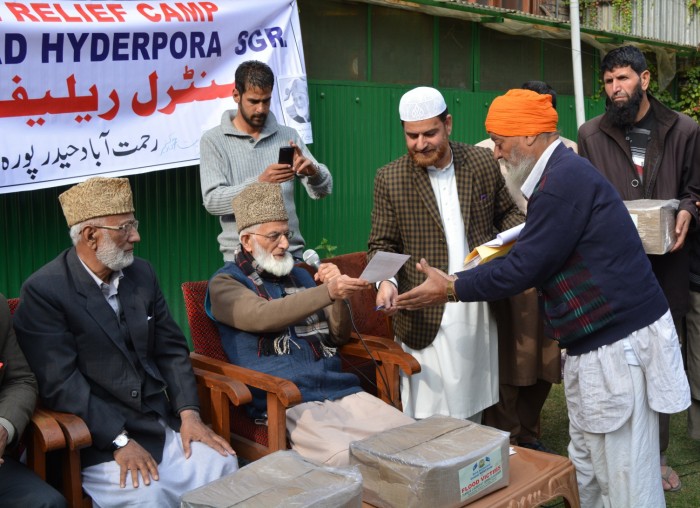
Floods have decimated crops and the businesses. Even those which survived have either backward or the forward channel snapped. Initial estimations suggest that nearly 100 thousand jobs are at stake if markets do not resume the basics. Businesses are readying to resume the routine but who will shop? Purchasing capacity is at an all-time low. Durbar move to Jammu will add to market panic.
In such a situation demand needs to be created. Improving liquidity will help. Once people have something to buy, the markets will naturally react.
Banking sector has a crucial role to play. Part of the funds that are required to help businesses re-start are expected to come from banking sector. There is lot of loud-thinking for the role the banks will have to play but financial institutions, state and the central government – everybody is exhibiting a sort of inertia.
The government can play a major role. Let the pace of cash dispensation at the treasury level not dry up for whatever reasons. Contractor’s pending bills must pass. Employees queued up for withdrawing their GP fund savings must take money home. If the government is facing liquidity crisis, let it manage some soft loan by convincing financial institutions that funds are required to reduce disaster impact. The divisional administration has been phenomenally sluggish in dispensing the funds it already has.
Once the liquidity position improves, let the state and non state actors start purchasing locally. The government made purchases of around Rs 200 crores, mostly power transformers. Had these been procured through local trade, it might have been slightly costly but this money would have circulated. The government should have purchased part of the transformers from local manufacturing units. The government wanted blankets and it flew its officials out. The same could have been done locally.
Lot many NGOs are working in flood affected areas. Most of them are procuring the materials they distribute from outside Kashmir. This is adding problems in recovery. Let the same cash be invested in the local market. Right now, lot many non-state actors are in the process of managing Pherans and bedding – given the winter approaching fast, they must be encouraged to procure it locally. Once money in thrown in the system, it circulates – has a cascading effect, improve labour retention and keeps businesses ticking.
INVITE LABOUR
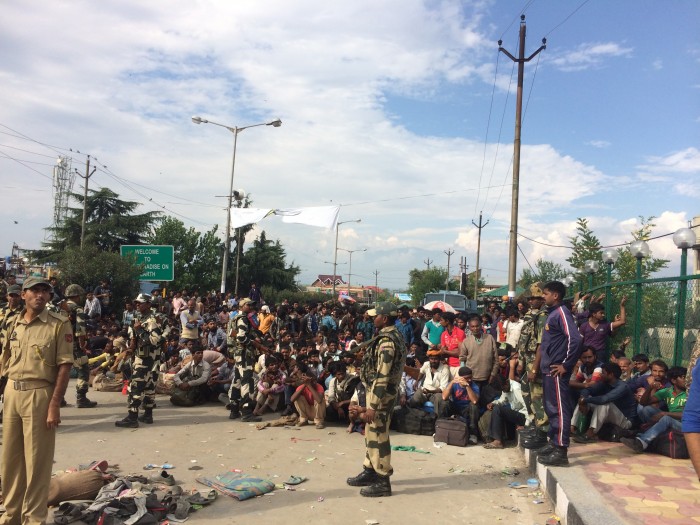
The devastation can only be erased if new constructions rise from the debris. But that might wait. However, sections within the flood affected lot are keen to undo some of the damages to the basic infrastructure. But the constructions sector is facing acute labour crisis.
“When we were flying the labour out of Kashmir, there was a section within the policy making that had opposed the idea tooth and nail,” a middle rung officer privy of the happenings said. “They had suggested a larger camp in a safe periphery where they will be adequately fed and helped to talk to their families back home but it was not agreed to.” The consequences of the bad decision-making are visible. As the rates have gone through the roof, the availability is an issue.
A senior officer told Kashmir Life that “he would” pitch for creating some basic infrastructure to have a labour camp which is adequately heated so that labour returns for at least two months. However, for this labour ministry of the state would require pulling the right strings to get a section of the construction labour from Bihar and UP back to Kashmir. Another option could be involving local labour contractors.
Availability of construction material is a major concern. Though the government has already approved the idea of selling subsidized timber (it is seeking Rs 47 crore from centre for that subsidy) but it has to be hassle free. It is yet to be notified who will get it and what is the procedure adopted.
Given the most of the brick kilns were severely damaged, people are using concrete hollow blocks. Inputs from the sector suggest the block makers are doing away with certain processes to make quick bucks. A block can be marketed only after it remained in water for 21 days. Its durability requires some check.
But the major issue that remains with the affected population is how fast the compensation is paid. The government has directed DCs to release Rs 75000 to every family in the first go but the total dispensation after six weeks is yet to cross Rs 70 crore!
ROOF MANGEMENT
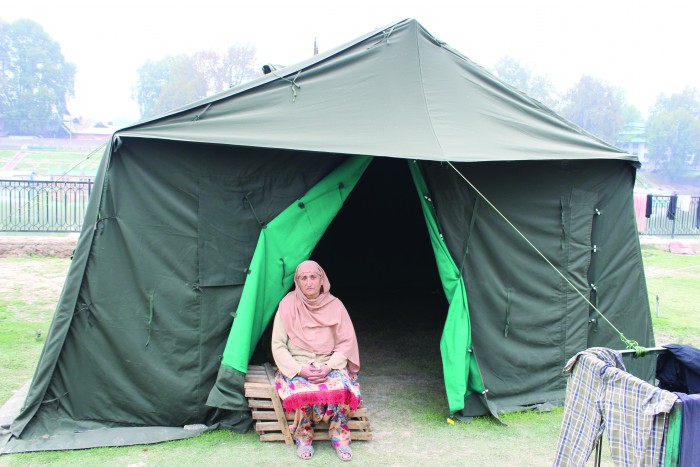
Given the winters approaching fast, the affected lot must move to safer places. Tents are available within and outside the government agencies but these are not desired because of the harsh winter. The three options left are: pre-fab structures, housing affected population for winter in existing infrastructure in the government or helping them hire on their own. An alternative accommodation might be required for many more families because R&B foresees more house collapses within three months. Already more than 20,000 houses stand collapsed.
Last week, Chief Minister Omar Abdullah mandated Kashmir’s Divisional Commissioner Rohit Kansal to decide if he would opt for having 150 pre-fab structures in the first go. It is not known if Kansal, who was mostly in air during the peak crisis, has made up his mind.
The government, however, has sought Rs 165 crore from the central government for funding the house-rent of nearly 35000 families for one year. This is part of the Rs 34995 crore package that Omar government has sought from Delhi, an idea that will be dissected by an inter-ministerial team that is visiting Kashmir. But the issue is what will state government do, if this part is not funded? It is high time for the policymakers to take a call on this subject. Kashmir had fewer deaths in historic floods. Winters can create a much bigger disaster.
UNLOCK THE CLASSROOM
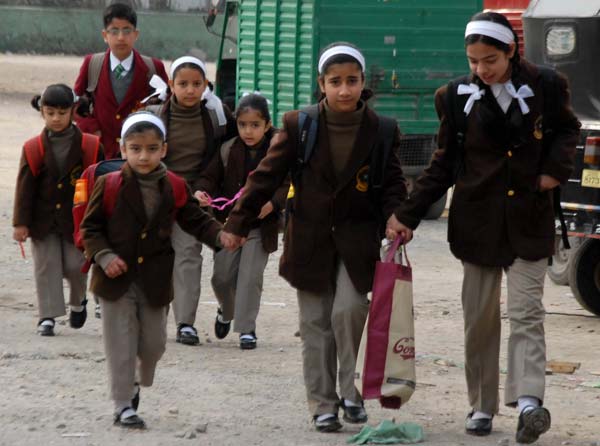
One of the most peculiar decision-making in the government was about education. Initially the idea about examinations was practical but later cabinet threw its weight behind deferring examinations. Right now 98 percent of schools are operations across Kashmir but government is still supportive of certain institutions that represent its bourgeoisie mindset.
Given the decision that examinations will take place next year, the students shall stay locked like for nearly six months. Once they will come out of the homes, they will be sicker than Kashmir’s decision-makers. Nobody in the government understands that every section of the society needs a sort of catharsis. While the adult males and females manage it, it is being denied to most fragile section of the population. Getting kids out of their homes for studies and examination is secondary to their movement, especially if they have witnessed the catastrophe.
Schools having their infrastructure must be encouraged to hire new space. Education, after all, is more business and less charity. They must follow the society. They must do what households and businesses are doing.
Tragic part of the story is that government’s education ministry has not conducted a survey of the educational infrastructure in the flood affected areas. They could help stake-holders in detecting the safe and unsafe buildings. The department is still inundated in transfer mafia!
COORDINATE EFFORTS

Every catastrophe-affected place exhibits two responses immediately. First, what can they do within the resources available and second what others can do if they come forward.
Kashmir is yet to get the attention from the biggies in the non-state sector like TATA Trust, ECHO, USAID and others. But there are lot many small NGOs which are working on ground, even at places where the government is yet to land its first step. Everybody is doing what it thinks is all right because there is clear lack of policy on ground. That was perhaps why a civil society groups is in the process of creating a portal to mange the basic coordination – an activity that is purely a concern of the governance structure. Government has reacted during the initial days after the media identified problems the NGOs were facing in relief transfer. That was the end of it.
Usually states set up cells for interacting with the NGOs. Without dictating its priority on the non-state actors, these cells gather information about the idea and resource from particular NGOs and then deploy them at places which require that particular effort. Nothing such is happening in Kashmir. In fact the government was so fast it sought a lot of medicine from the NGOs and then snapped the ties!
At the same time, the civil society needs to put in more efforts to attract other NGOs. Barring Action Aid that has been working here for a long time, not many overseas groups are working here. These groups do not get resources only; they get systems and exposure too.
MAKE GOVERNANCE VISIBLE

The incumbent government sees the forthcoming elections a much bigger disaster than the floods that inundated it. There are serious governance issues that add to the crisis. If anything and everything that was touched by the flood waters is to be discarded why are crowds attracted to the special sales in markets? Why flood devastated paddy is being husked? How many arrests were made of people caught selling flood affected material including medicines and eatables? How many interventions were there to stop construction on encroached sites?
The major problem is that the government had decided against exercising the mandate it has. It is spearing action for the next government simply because the thinking is that any intervention would lead to a problem in voting.
There are serious issues involved even at the relief distribution level. Questions are being asked if there was no flood in Chrar-e-Sharief, why 51 truckloads of free rice should be distributed. Why should Khanyar get 27 truckloads of free rice? Or why should Jammu province get Rs 320 crore, the same amount that was released to Kashmir if the devastation is disproportionate? There are serious allegations in management of the relief that came from outside. Who took 3500 induction cookers worth Rs 1.15 crore from a relief storage site? Who came to collect a Korean blanket truckload and ensured it is not listed?
The concessions that the state finance ministry has extended to the NGOs has already cost nearly Rs 135 crore to the state coffers. But now officials at smaller levels have started fleecing the affected populations. There has not been any serious effort to prevent non local truckers seeking four time the freight for apple!!
The government, it seems, have stopped thinking and acting. This has given a bigger room for the courts to act. Had the state government interacted with the insurance companies at the governmental levels, the court might not have come in between.
Initial inertia has clouded many good things that government did. But its absence on ground has added to the overall insult. Sending revenue teams comprising patwaris and naib tehsildars for survey is all right for land, and orchards but what does either of them know about a house. Supreme Court has rightly directed the state government to send engineers for assessment of the housing infrastructure, a decision that state government could have taken at its own level and much earlier.
PEN A DRAFT

The major development that the state government is credited itself for is the Rs 43995 crore proposal that it submitted to centre. Officials admit that this is a paper that is aimed at initiating some sort of discussion. They, however, do not admit that the entire proposal is basically a rehashed version of various memoranda that the government received from various stakeholders in last one month!
The problem for the state government comes from the absence of a professional third party survey. The civil society put a cost to the lost and the state government grabbed it. The real loss might be higher or even lower. But who will say it? The government skipped seeking the services of professionals in the ADB and WB who could have sent a team after receiving a formal request. They were not supposed to come with money but with expertise to assess the loss. It is too late but it still can be done.
The government must immediately start plucking the breaches on the Jhelum and Flood Spill Chennel dykes. There are more than 30 spots on the twin channels within Srinagar alone. If Jhelum increases its water level or there are a couple of cloud bursts in south Kashmir, these areas will again be under water. By now the embankments should have been brought back to the September 5, 2014 level.
This government is about to conclude its term. But that should not stop it from creating a larger interactive mechanism between the society, the experts and the government agencies to loud-think a futuristic plan. There are already demands of smart city but that can only be created on the debris on the existing city if there is a blueprint. Start the spadework and let it take next three months. Then the government will take care of it. But start somewhere.















